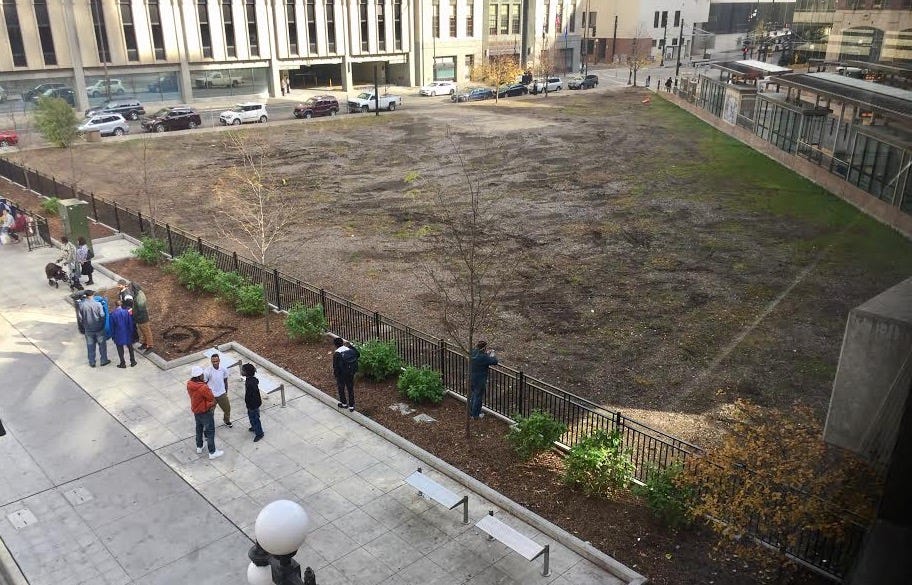7 Steps to Transform a Place Without Money or Authority
Kicking Off Our Series on Placemaking as Change-Making
If you've ever tried to make a public space better, odds are you've run into what feels like endless roadblocks — often from those you thought should be on your side. How confusing and frustrating!
Whether you’re a resident or small business owner with little, if any, formal authority; a planner, architect or consultant trying to do good work; a maintenance team member holding things together; or a developer, landlord or public agency head with resources at your disposal, one can feel like all the forces and rules are encouraging mediocrity, or worse.
What’s going on here and what can we do about it?
From Islands of Isolation to Connected Webs
A place is the result of all the elements that go into shaping it working well together: the physical features, operations, events, communications, branding, etc. Yet these elements and the people responsible for them are relatively cut off from each other. So, ultimately, the elements themselves don’t work well together, and in many cases, it seems like the various actors aren’t merely poor communicators, but actively hate each other!

Placemaking as a (Lowercase “p”) Political Act
We need to face up to the fact that the act of placemaking (that is, improving the experience within a place) is explicitly an act of interpersonal, organizational, and systemic change-making. To change what we see and experience, we must change the (small-p) political dynamics behind them.
To make something substantially better, we can’t just adhere to the default system. We’re not talking about breaking laws, but moving against the mediocrity the system produces if you merely go with the path of least resistance every time.
With so many entities having a role in shaping a place, we never hold all of the authority over what happens, no matter our position. So, the process of placemaking as change-making will require influencing those we have little control over, especially those who are seemingly blocking our path. We have to trade control for collaboration to achieve a vision of shared success, of a better place for all people.
Conversations as the Key
The key that will unlock our desired place-based changes ends up being our conversations: what and how we communicate.
Our conversations determine what gets built. Hammers are swung, asphalt is laid, glass is mounted, the grass is cut — all of these are actions that get prioritized or deprioritized through a series of conversations that prioritize certain things over others, that invite and discourage input of varying kinds. Even the skills of those involved are developed in large part by conversations accompanied by observation and study.
In other words, good communication is our pathway to creating more meaningful connections between each other, and this in turn allows us to shape spaces to serve our connection (i.e., our community) together. What, then, are these conversations and what is the most effective way to have them?
Of course, if it were as easy as saying, "a better way is not only possible, but achievable," then all of the pilots, projects, and initiatives to date would have been enough to turn the tide. Unfortunately, it's not so easy to undo a long history of bad habits, which at this point have become codified in our standard approach to shaping spaces. We've all been in conversations that seem to go nowhere, and we've all seen projects that ended up being lackluster in their final forms compared to the hopeful visions behind them.
At the same time, we've all had instances where conversations did lead to understanding and actions did create a better place. Why is it that some conversations and extended efforts seem to go better than others?
Why did one tactical pilot snowball into a total transformation while another fizzled after launch? Why did one main street rebound when another one continued to decline? Why did one park improvement lead to a new center of social life when another remained empty, even with a bunch of new stuff?

7 Steps to Transform a Place Without Money or Authority
In my own practice, we noticed some patterns of specific and (roughly) sequential steps that opened up space for positive and productive possibilities in the face of perceived scarcity and resistance. We eventually summed up these observations into our seven-step placemaking process, which we’d jokingly refer to as "how to get things done without a lot of money or authority." The steps are:
In this upcoming series, we're going to take you through these steps, coupled with discussions of common hurdles, and strategies to overcome them when trying to make a shared place better. All throughout this process, the conversations you have with others and how you handle that communication will be your keys to success.
And if this sounds daunting, the truth is that it can be. But don't worry: positive outcomes are possible with the right method and the right mindset. You already have all that you need to get started making a real difference.
The approach I'm about to outline is one that I've already done the work of testing out for you time and time again in my own practice, and I've seen it work — I'm confident it will work for you, too. Learn how in part two of this series.

Looking forward to reading future posts.